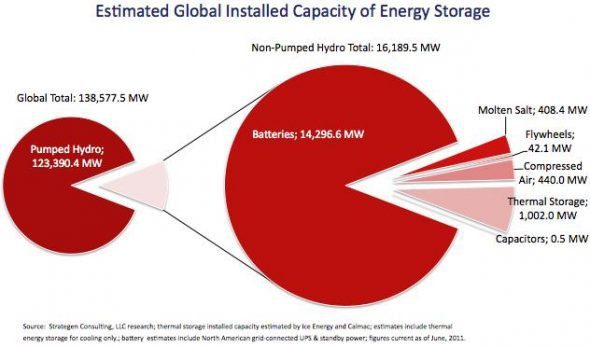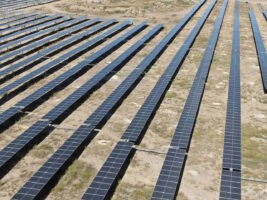The lament about solar PV used to be ‘if only it were cheap’. With prices now approaching the magical US $0.50 per watt, that lament has turned to “if only solar electricity could be stored”.
At the 2012 Intersolar North America Conference and Exhibition in San Francisco, that wish is quickly turning into a huge market potential. At a briefing for journalists, the executive director of the California Energy Storage Alliance and managing partner, of Strategen Consulting, Janice Lin, said the two hottest topics today are energy storage and grid integration.
With the implementation of the California legislation passed into law in 2010 – the first in the US – procurement targets for energy storage will be in place by 2015, encouraged by 250 million of state incentives for ‘behind the meter’ projects.
Coupled with nearly $250 billion in utility spending in the next decade in areas where energy storage can compete, Lin believes we are at the start of compelling business case for energy storage in the entire electricity production chain that will “fundamentally change our power system as we know it”.
When storage is “sprinkled” through generation, distribution and demand, she says, the entire system can be optimized and enable more renewable energy as an asset class on its own. Lin cites a bid by AES to the Long Island Power Authority to install 400 MW of storage in a tender for peaking power as an example of where energy storage can be a viable generation asset.
Here’s what Lin sees as the current grd-connected market for energy storage.
What’s often overlooked is the fact there is already substantial energy storage – 20 GW in the US alone – as emergency backup and uninterruptible power supplies (UPS), according to John Wood from Ecoult, a company marketing the CSIRO developed ‘ultrabattery’ capacitor system. Wood says tweaking these supplies for dual purpose to respond to grid demand is a positive business case today with no support.
Xtreme Power is another company competing in the energy storage sector with battery technology suited to the high instant power applications needed for renewable integration. Based in Kyle, Texas with 229 employees and an $80 million investment, the company markets a fully integrated system that can be scaled to 100’s of megawatts and designed to improve power quality and time shift energy delivery from 5 min to 4 hours.
The company says it can install units for $1 watt and less with larger systems, competing even with very cheap natural gas in some markets. But cost is not the only issue. Regulatory changes underway in the US, including changes at the Federal Energy Regulatory Commission, are beginning to allow an even playing field for energy storage. “Permitting is so much easier,” says Xtreme Power’s Vice President of International Business Development, Jarl Pedersen, particularly at a substation in urban areas. Pedersen says Xtreme Power’s energy storage systems have no direct emissions, no noise issues, do not require water, and are use non-hazardous materials.
Pedersen cites other market drivers: in Europe, Germany is going to replace 23 percent of energy supply that used to be nuclear with solar PV and wind. “To do that, there has to be balancing resources,” he says adding that storage technologies will be able to enhance weak grids, maintain grid stability and enable more variable renewable generation. Pedersen believes energy storage and power management systems will play a major role in the sector.
Dr. Matthias Vetter of Fraunhofer Institute reinforced Pedersen’s observation for Solar Energy Systems ISE. Battery storage, he says, is a critical component in Germany’s move to increase the current 27 GW of PV by a factor of three. Dr Vetter said 80% of the current PV peaking is fed into the low voltage grid through systems smaller than 100 kW.
Germany will concentrate on lithium ion technology in 3-10 kWh applications, he says, and noted new lithium–titanate technology with the potential for 7000 cycles that equates to a 15-20 year life at one cycle per day.
Such technologies may make drive stationary application much faster than mobile applications, as their energy density and hence heavier weight is much less important.
Curiously, there was only one battery exhibitor and only one inverter manufacturer, Outback Power, displaying a off-grid battery pack integrated into their inverter range. Absent too was lithium ion battery manufacturer A123 who have develop a proprietary process with a potential to triple current energy densities.
Copyright 2012 Peter O. Fries. All rights reserved









